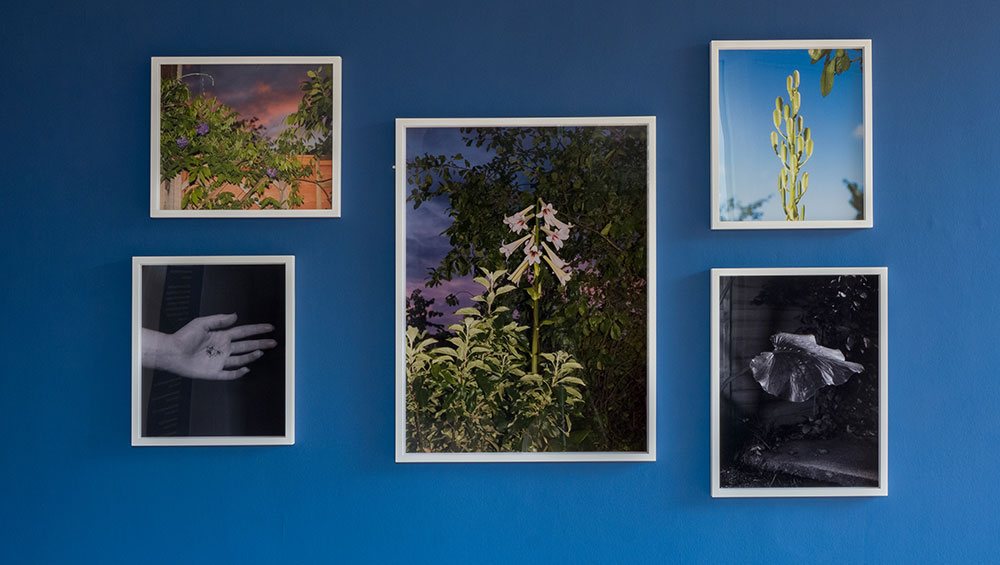
by CHRISTIANA SPENS
Inverleith House Gallery, situated in the Royal Botanic Garden in Edinburgh, is the recipient (along with its partner, the Serpentine Galleries) of the Outset Contemporary Art Fund’s Transformative Grant, the largest annual grant of its kind in the UK. Inverleith House’s new three-year project – the transformation of the gallery into “Climate House” – has just been announced. Emma Nicolson, the head of creative programmes there, spoke to Studio International about the plans.
Christiana Spens: The prospect of Inverleith House Gallery being turned into Climate House is very exciting. Can you tell us a little more about how the historic building, built in 1774, will be transformed?
Emma Nicolson: Inverleith House has a fascinating history. It is a rare survivor of several large houses built close to Edinburgh when the city merchants were keen to escape the overcrowded and unhealthy medieval old town. For a time, it was home to the regius keeper (director) of the Royal Botanic Garden Edinburgh (RBGE). By 1960, this was no longer a requirement and it was converted into the founding home of the Scottish National Gallery of Modern Art, until the gallery moved again, in 1984. From 1986, the RBGE has run a highly successful programme of contemporary and modern art exhibitions in Inverleith House, which have included many of the biggest names in the art world, such as the sublime work of Louise Bourgeois.
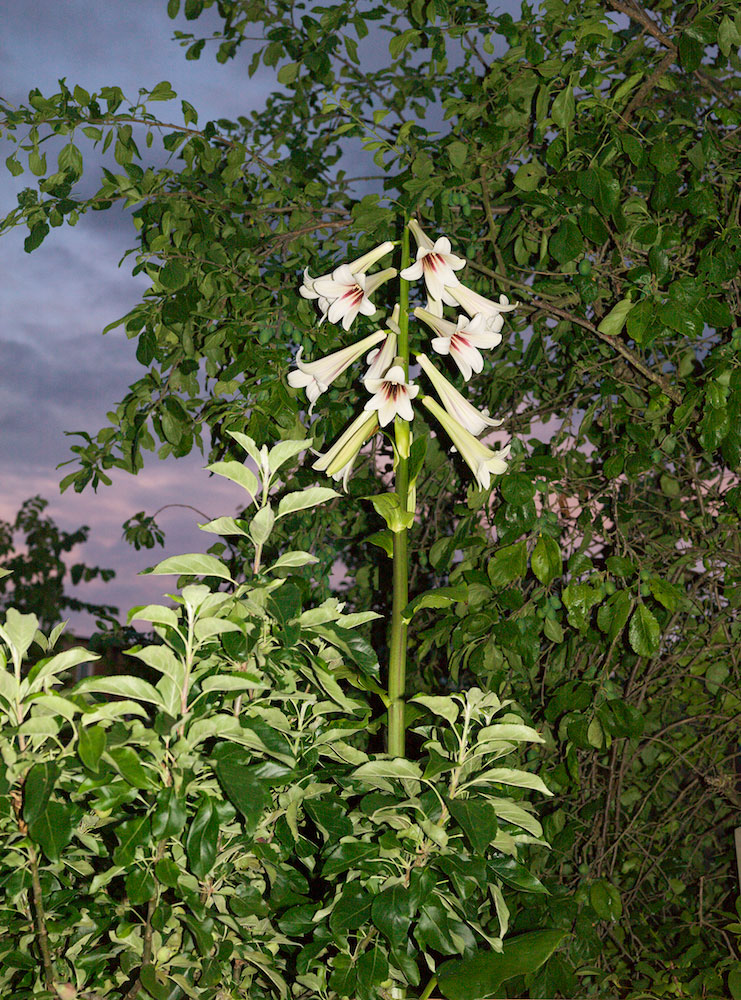
Wendy McMurdo, Night Garden (cardiocrinum), 2020. © the artist.
In recent years, though, it had become untethered from the mission of the RBGE and, when I joined, I had the opportunity to reimagine its role. This is an exciting moment to think about a new approach that points to the future. We took the opportunity of the garden’s 350th-anniversary year [it was originally established in 1670 as a physic garden near the Palace of Holyroodhouse before moving to its current location in 1820] to launch a new manifesto for the arts. Out of that came the concept of a Climate House. We have a long way to go, but what is critical is that we have formally and strategically committed to these goals. This is an extraordinary opportunity for us to rethink how we operate and engage with artists, audiences and the city. One of the first artists we invited to work with us on reimagining Inverleith House was Keg de Souza, who is based in Melbourne and works with inflatable structures and building spaces for dialogue and gathering. Work has been stalled slightly because of the Covid 19 pandemic and travel restrictions, so we will have to wait and see how her ideas evolve over the next 12 months.
CS: You have said that Inverleith House will become a gallery for the 21st century. What does this look like to you? How will visitors experience it?
EN: I want people to view Climate House as a prototype for an art institution that is focused on a really broad understanding of art, ecology and science, a place that can bring all these fields together towards environmental causes. Establishing a clear definition for an art gallery or museum in the 21st century, especially one that is embedded within a very historic institution such as ours, is no small endeavour. One challenge is transforming the space sometimes associated with colonialism, empire and intellectual and social elitism into a place for a range of perspectives that is inclusive and welcoming and more of a home for art in the garden. I would guess that the majority of people do not think about the research, planning, coordination – and sometimes political dealings – that are part of making an exhibition. We have incredible resources available to us in our archives: our science and plants provide a brilliant platform to activate and talk about so many contemporary concerns and issues.
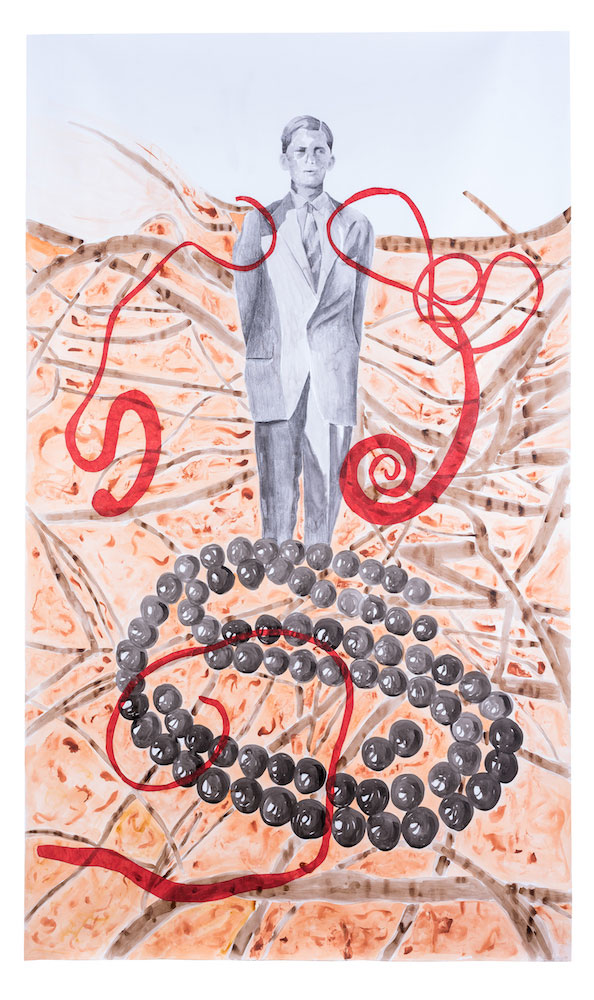
Annalee Davis. As If The Entanglements Of Our Lives Did Not Matter – Pearl, 2019-20. Mixed media drawings on paper and ledger pages, 60 x 36 cm. Photo: Daniel Christaldi.
CS: Lucia Pietroiusti, the Serpentine Galleries’ curator of general ecology, said recently: “The difference between pointing at an urgency and finding agency to respond to that urgency is vast, and often goes unnoticed.” This struck me as a really interesting point. Could you expand a little on that idea of finding agency, and how Climate House will enable that in the community?
EN: Absolutely, it is really important. I am a great admirer of Lucia’s work and looking forward to collaborating with her more. We have so many synergies to explore. It was the philosopher Bruno Latour who said: “Objects, too, have agency.” It is easy to view museums and galleries as repositories of artefacts and botanic gardens as repositories of plants, but how many people consider the politics and power dynamics involved in acquiring artwork and plants, where they were collected or taken from, or how they are displayed and explained within a larger cultural narrative? My curatorial practice has always extended beyond the exhibition into working with entire contexts. I think that unfolding a map of connections between art, artists and audiences is how you build in agency and how we can encourage public action around climate emergency.
CS: How can artistic imagination, alongside scientific vision, help the environmental cause?
EN: In the current climate of environmental precarity, the need to prompt ecological change becomes more than just a job for the scientific community. Looking towards culture and the arts has proven an effective way to begin addressing current environmental issues. Artists use their work to shine light on issues of environmental justice, raise awareness of environmental insecurities and risks and imagine more sustainable futures. By combining the arts with environmental science, we are able to inspire transdisciplinary learning and spark new ways of imagining and envisioning how we might live in the future.
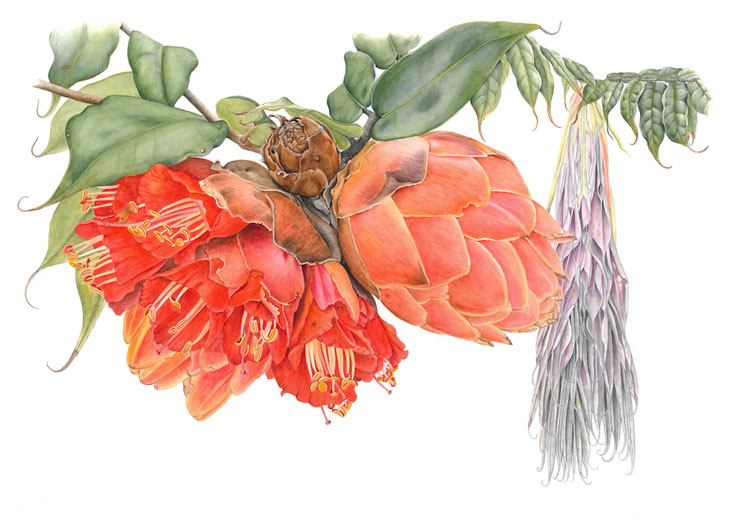
Maria Alice de Rezende. Brownea grandceps.
CS: What do you think should be the role of art institutions in the age of climate crisis?
EN: Over the past 150 years, we have changed the balance of our planet by living beyond our means. We have generated huge amounts of methane, burnt enormous amounts of fossil fuels and cut down vast swathes of forests; all of which contribute to the largest environmental challenge our generation has seen. Our scientists have told us that the global temperature will continue to rise for decades to come. We all need to take responsibility and act now.
Art institutions have the opportunity to bring a multidimensional and transdisciplinary approach to highlighting the devastating effects humans have had on the planet. Through bringing together artists with ecologists, scientists, engineers and politicians, we can gain a deeper understanding, share viewpoints, enable research and activism and raise awareness around the climate crisis.
Because of the RBGE’s relationship to plant science and showcasing the value of the natural world, it is inherently well placed to lead the way in addressing climate change in all the work we do and this includes helping our staff, volunteers and audiences to take similar steps at home, however small. We already have sustainable practices across the RBGE that include water saving, a rain garden, recycling, composting, food sourcing and avoiding food waste. We want to share our knowledge with audiences to encourage them to take their own steps towards sustainability and climate action. I think of “climate” in the most general of ways, interconnected with everything we do, both public-facing and non-public-facing work.
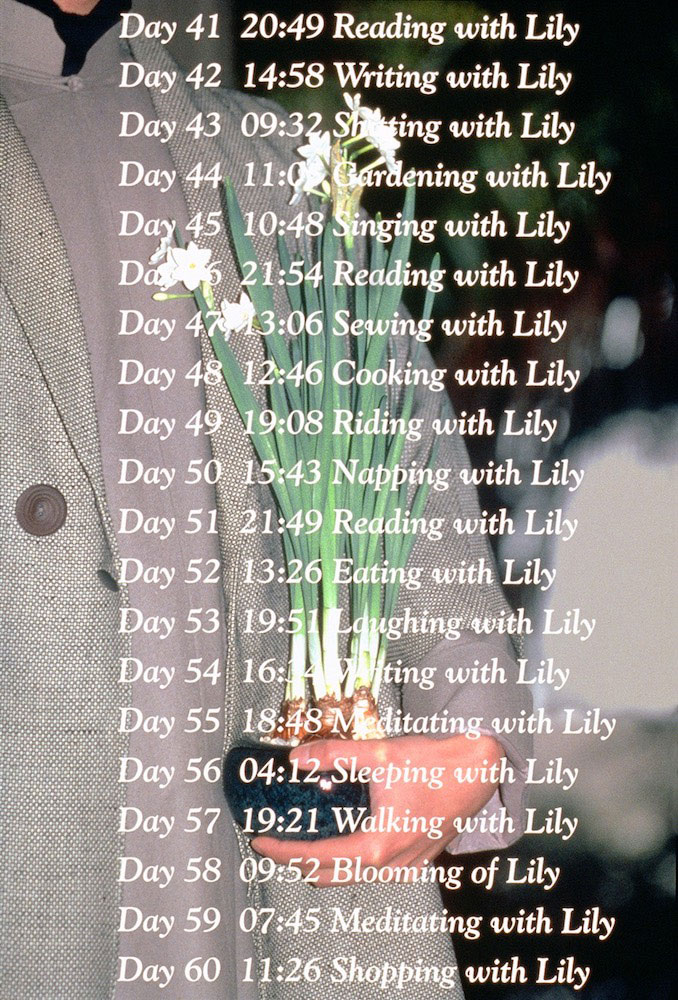
Lee Mingwei, 100 Days with Lily, 1995. Silver dye bleach print. Photo courtesy of Lee Studio
CS: Can you tell me about collaborations with Serpentine Galleries’ Back to Earth initiative?
EN: We will be collaborating with the Serpentine, building links between our Climate House project and its Back to Earth initiative and a new, jointly formed General Ecology Network. Through these meeting points, we will collaborate with a diverse range of artists. Due to the pandemic, much of our behind-the-scenes work has not been accessible and this has slowed down our capacity to connect artists to the resources here at the RBGE. Lucia and I are still discussing the who, what, where, when, but names include [London-based art duo] Cooking Sections, James Bridle, Kapwani Kiwanga, Fernando García-Dory, Tabita Rezaire and Ayesha Tan Jones. The range of artists offers a huge diversity of approaches in addressing climate issues. The wide range of topics covered by these artists, from power asymmetries and activism to food and memory, will hopefully create an intersectional programme of art that deftly navigates the real breadth and depth of the climate crisis.
CS: Can you tell me about some of the work that will be shown, and individual artists’ approaches to the climate crisis?
EN: Our research prior to the pandemic tells us that concern about climate change is greater than we’ve seen historically at a population-wide level, and responding to this is an important area of artistic practice right now. Artists working with us will be able to engage with our work at RBGE in many different ways, from the science and conservation projects that are happening right now around the world, to delving into our archives and herbarium specimens, to working with our education and community engagement teams and their amazing local gardening programmes.
CS: There will also be a new solo show from Christine Borland to be part of Climate House 2021 programme. Can you give any hints as to how this will transform the gallery and what it will say about the climate crisis?
EN: This is our 350th anniversary year and Christine Borland was one of a number of artists invited to respond to our archives and our origin as a physic garden. Christine is particularly interested in that early story and the role of women, along with the healing power of plants. A key area of focus for our Climate House will be around listening to voices less heard. Through Christine, this might include her interest in women and science. There is a historical amnesia about women’s role in the study of plants, and a need to dig deeper to unearth the stories of working-class and indigenous women who have contributed to the knowledge of our natural world.
CS: One aspect of Climate House that really interests me is its collapsing of the boundary between culture and nature. Could you explain a little more about what this means and how the gallery will fuse elements of both worlds to create a new one?
EN: This is a really interesting question and really talks about the “othering” of nature. Our Garden has its roots in Edinburgh’s Enlightenment, a period that created distinctions between the natural and social worlds. Increasingly, artists and other modern thinkers are moving on from this viewpoint to a much more organic, holistic and complex set of relationships. Many of the artists we are talking to are interested in the continuum that exists between humans, plants and animals, and their work may help to question the imposition of a nature/culture division.
• Future Ecologies, Inverleith House, Royal Botanic Garden Edinburgh, continues until 28 February 2021.